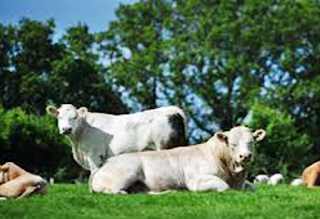Corn crops yield extraordinary amounts of vitality rich feed
that can keep cattle and animals well-fed, fat and healthy. The processing of
corn crop for animal feed- - called silage- - results in a feed item that
gives better vitality and absorbability to animals. Because the basic standards
of corn cultivation stay constant whether the crop is grown for human or animal
utilization, gardeners of any expertise level can raise corn for animal feed in Delhi.
Some vegetables brief a summer vegetable garden like sweet
corn. Its rustling stalks shoot up as the climate warms, each producing a
normal of one to two golden, sugar-sweet ears by late summer. Corn is somewhat
fussy about its growing conditions and care, yet the taste of a homegrown ear
fresh from the husk attempts.
Varieties of Corn
Corn
cultivars are classified by their shading, sweetness level and days to
development. Basically, sweeter corn assortments are less stress-resistant than
standard corn, so nursery workers in less moderate atmospheres ought to pick
standard assortments, for example, Seneca or Golden Cross Bantam. Early corn
assortments, for example, Seneca and Silver Sensation are prepared for harvest
in 70 to 74 days, while middle of the season and late cultivars, for example,
Silver King and Silver Queen can take 80 to over 90 days to achieve
development. Since corn is a warm-season crop with a long developing period,
nursery workers in cooler atmospheres with a shorter developing season ought to
pick early assortments to make sure a decent yield.
Consistently
amid the summer, here on the dairy farmers are with developing corn for the
animals. Corn would most likely be the staple nourishment of dairy cows.
Many
individuals today scalped animal farming for utilizing corn. The contention
being that with all the corn that cows expend, rather than feeding it to cows,
we could utilize the corn to feed individuals. The contention seems to make
sense at first, yet when you see at the huge picture you find that they are
forgetting something.
Converting Inedible Food into edible food
When
we feed the corn to dairy animals, we don't only feed them the corn cob. We
feed them the whole stalk (the entire plant). The whole corn plant is cut up,
and put into a heap. The heap is packed by a huge tractor that packs the heap
to dispose of oxygen from the heap. Oxygen = spoilage. The heap is secured, and
it ferments so we have a feed source that is accessible all year around.
The
animal can process the whole corn stalk, something individuals can't eat. So
the cow really is changing over an item toxic by individuals, into an excellent
food product rich in protein.
Corn is Environmentally Friendly
 Corn
is very environmentally friendly crop also. Corn resemble grass, however
develops much taller. Because corn develops entirely tall, you get a lot of
nourishment per acre of land. So contrasted with grass, we can develop more
nourishment per acre of land which utilizes less natural resources.
Corn
is very environmentally friendly crop also. Corn resemble grass, however
develops much taller. Because corn develops entirely tall, you get a lot of
nourishment per acre of land. So contrasted with grass, we can develop more
nourishment per acre of land which utilizes less natural resources.
Select
a planting time according to your region's atmosphere and the assortment of
corn you intend to plant. Numerous assortments of corn grow just in warm soil.
Contact your seed supplier or read your seed packets to figure out whether your
corn resists frost. On the off chance that your assortment of corn requires
warm soil, hold up to plant until the date of the last normal yearly frost has
passed.
Set
up the planting region till the soil of planting region is utilizing a garden
hoe. Utilize a shovel to develop areas excessively thick or difficult for the
garden hoe. Draw a bow rake over the cultivated area to expel extensive weeds.
Complete weeding by hand.
Form
corn lines utilizing the bow rake. Push and draw soil to fabricate mounds of
dirt around 2 feet wide. Permit 3 feet of space between rows. Run a rake over
the crown of completed rows to gently level the planting surface.
Plant
corn Kernels: Plant ½-inch profound for as often as possible damp soils and 1
inch profound for dry soils. Permit 1 foot between plantings. Control weeds
amid the developing season by cultivating the area encompassing stalks with a
garden hoe. Flood corn crops amid times of lacking precipitation.
Harvest
corn at ideal development level for animal feed. The ideal development
level of corn for Cattle feed
in Delhi is dictated by the area of the “milk line” of corn
kernel. The milk line is the purpose of division between the strong and fluid
segments of a kernel. Find the milk line by gnawing a kernel. Start gnawing at
the ear's tip. At the point when the milk line happens most of the way to the
base of the kernel, it's prepared for gathering as animal feed.


